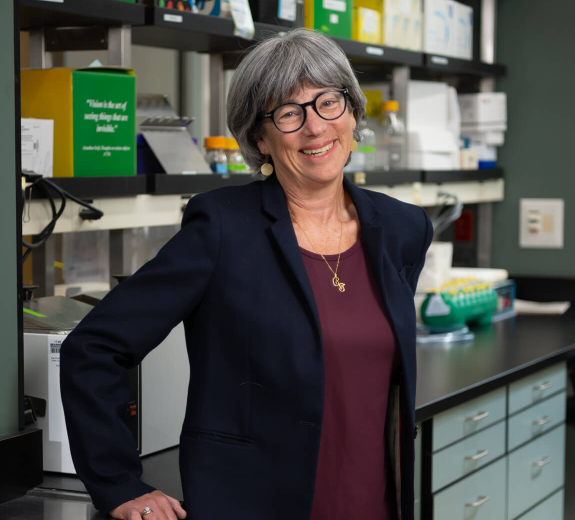Q: What is Teplizumab?
Dr. Greenbaum: Teplizumab is an immune therapy. Immune therapies can speed up the immune system to attack invaders like cancer cells. They can also slow down an overactive immune system in conditions like autoimmune diseases.
Q: How does Teplizumab work?
Dr. Greenbaum: Teplizumab impacts T cells in the immune system, which dampens the immune response. In T1D, the immune system is attacking the insulin-producing beta cells. Teplizumab helps slow down the immune system's attack on these cells.
If you would like to know more about teplizumab and how it works, contact Diabetes@Benaroyaresearch.org.
Q: How did researchers test this therapy?
Dr. Greenbaum: The drug was tested in a placebo-controlled clinical trial. In the trial, people who were at high risk for developing type 1 diabetes received either placebo (saltwater) or active drug (teplizumab). We then compared who developed type 1 diabetes in each group. Learn more about testing this therapy.
Q: Does Teplizumab have any side effects?
Dr. Greenbaum: Like all therapies, Teplizumab has a few side effects which include rashes and low white blood cell counts. The good news is that in the trial, these side effects largely lasted for only a short while.
Q: What have researchers learned about Teplizumab’s effectiveness?
Dr. Greenbaum: Teplizumab delayed the development of T1D by a median of two years. Further follow-up suggests that T1D development may be delayed even longer.
Q: Who is eligible for Teplizumab to delay T1D?
Dr. Greenbaum: People at high risk of T1D may be eligible for teplizumab treatment.
Q: Who is at high risk for developing T1D? How do I find out if I am at high risk for developing T1D?
Dr. Greenbaum: Family members of people with T1D are 15 times more likely to develop the disease than the general population. Family members can receive free screening through TrialNet. Screening looks for specific autoantibodies (proteins in the blood) and tests how your body tolerates glucose. We know from decades of research that people with two or more T1D autoantibodies will eventually develop T1D. People with two or more autoantibodies and abnormal glucose tolerance are at especially high risk, which is why they may be eligible for teplizumab.
Q: Why are BRI and TrialNet aiming to delay and prevent (instead of cure) T1D?
Dr. Greenbaum: To stop T1D, we need to keep the immune system under control and save insulin-producing beta cells. In people who have T1D, replacing those insulin-producing cells will only work if we keep the immune system from attacking them again. This is the first step to curing T1D.
Q: What are the benefits of delaying T1D? How can this finding impact the lives of people at risk for T1D?
Dr. Greenbaum: Every day without T1D is important. It is a day without relentless attention to diet, activity, glucose levels and insulin dosing. It is a day without worrying about blood glucose levels being too low or too high. It is a day without worrying about long-term problems with kidneys, eyes, and heart. This is an amazing advance – offering real benefits and the promise of future improvements.
Q: What are benefits of knowing my risk and monitoring for symptoms?
Dr. Greenbaum: People who are not monitoring symptoms and do not know they are at risk for T1D may develop a serious complication requiring hospital care, such as diabetic ketoacidosis (DKA), before they are diagnosed. In children, DKA at diagnosis has been associated with problems with brain function, even months later, and with worsening ability to control their blood sugar over time.
Knowing and monitoring symptoms can lead to an earlier and less abrupt diagnosis and help reduce the risk of complications of T1D. This can also give patients and families more time to adjust to the life-changing demands of T1D management while they are still producing some of their own insulin.
Q: What role did BRI play in this research?
Dr. Greenbaum: TrialNet led this research and BRI is the TrialNet Center for the Pacific Northwest. I am part of both organizations – as BRI’s Director of Diabetes and the Center for Interventional Immunology and was Chair of TrialNet during this study. I've seen firsthand how research sites like BRI make this work possible.
BRI enrolled individuals in this study from a five-state region. Our research team treated and took care of individuals in the study. BRI scientists Alice Long, PhD, and Peter Linsley, PhD, also tested blood samples from people in this study and identified the immune cells most linked with people who did well with therapy.
Q: What’s next in T1D prevention research?
Dr. Greenbaum: BRI is working to find ways to delay T1D for longer and for more people. We are working to identify new biomarkers (biological characteristics) that help determine which treatment will work best for which person. BRI continues to test multiple other therapies to see if they too can prevent or delay T1D.
Q: How do I get teplizumab for myself, my child or my patient?
Dr. Greenbaum: The FDA decision is a necessary first step, but there will be additional steps before this therapy is widely available. These include insurance company approval, who can give the intravenous treatments and where. At BRI, we have more experience with teplizumab than anyone else in the Pacific Northwest and we hope that we may be able to offer this treatment in the near future.
If you have questions about you/your patient’s risk of developing T1D or use of teplizumab, please contact us at diabetes@benaroyaresearch.org or call 1-800-888-4187.
Q: How can I get involved in type 1 diabetes research?
Dr. Greenbaum: BRI and TrialNet work together on many T1D studies. Contact us at Diabetes@Benaroyaresearch.org to learn more!




